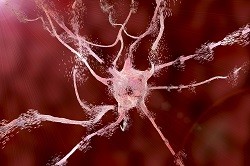A new genetic progression measure for Huntington’s disease offers hope
Huntington’s disease (HD), a rare degenerative inherited gene, affects up to approximately one in 10 000 people in Europe. Whilst HD remains a fatal neurological disease which develops at a gradual and relentless rate with an average duration of 15-20 years, a team of researchers led by Cardiff University and University College London (UCL) have identified a novel measure of the disease’s progression to help better understand the disease and its development. ‘The strength of our finding implies that the variant we identified has a very large effect on HD, or that the new progression measure we developed is a much better measure of the relevant aspects of the disease, or most likely, both,’ describes Professor Lesley Jones (Cardiff University), who co-led the study published in ‘The Lancet’. Whilst larger mutations are linked to the rapidly progressing disease, not all factors behind the disease’s progression are known. As a result, using high quality phenotypic data on people with the HD gene mutation, the team established that different symptoms of disease progress in parallel which meant they could combine and compare data from cognitive, motor and MRI brain imaging variables to deliver a progression score for genetic analysis. They also looked for areas of the genome associated with their progression measure, and found a significant result in their sample of 216 people, which they then validated in a larger sample of 1 773 people from a separate cohort, the European Huntington's Disease Network (EHDN) REGISTRY study. ‘We’ve identified a gene that could be a target for treating Huntington’s disease. While there’s currently no cure for the disease, we’re hopeful that our finding could be a step towards life-extending treatments,’ said Dr Davina Hensman Moss of UCL’s Huntington’s Disease Centre, a lead author of the study. The genetic signal in question is likely to be driven by the gene MSH3, a DNA repair gene which has been linked to changes in size of the HD mutation. The researchers identified that a variation in MSH3 encodes an amino acid change in the gene. HD’s exact pathway remains unclear but we know that the striatum, a structure of the basal ganglia located in the central region of the brain - responsible for planning and controlling movements but also other cognitive (thinking) processes - is the part of the brain most affected by HD. Loss of cortex (grey matter in the outermost layers of the brain) occurs during disease progression which contributes to the worsening of the cognitive function. Moreover, HD usually develops in adulthood and causes abnormal involuntary movements, psychiatric symptoms and dementia. Each child of a carrier of the mutation has a 50 % chance of inheriting the disease. Nevertheless these findings will undoubtedly help better target future HD studies and treatments against the disease, ‘Now we know that MSH3 is critical in the progression of HD in patients, we can focus our attention on it and how this finding may be harnessed to develop new therapies that slow disease progression,’ explains Professor Sarah Tabrizi, another co-author of the study. The EU-funded NEUROMICS project, which supported the research leading to the article in ‘The Lancet’, uses the most sophisticated -Omics technologies to revolutionise diagnostics and to develop pathomechanism-based treatment for ten major Neurodegenerative (ND) and neuromuscular (NM) diseases, which includes Huntington’s. For more information, please see: project website
Countries
Germany



